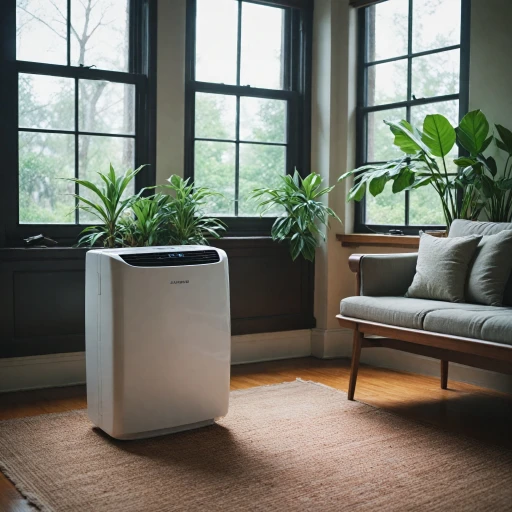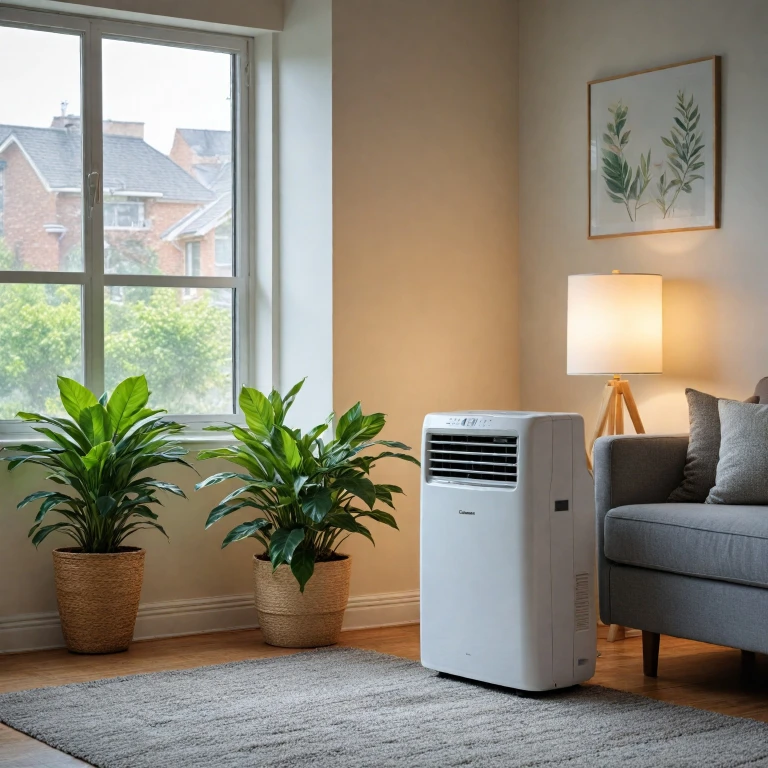The Basics of a 1-Ton Portable Air Conditioner
Understanding the Cooling Capacity of 1-Ton Portable Air Conditioners
A 1-ton portable air conditioner is a popular choice for many homeowners looking for an efficient and flexible cooling solution. The "ton" in this context refers to the unit's cooling capacity, typically evaluated in BTU (British Thermal Unit). For portable air conditioners, a 1-ton unit usually correlates to 12,000 BTU, offering enough power to cool medium-sized rooms effectively.
One major appeal of these portable units is their ease of use. Most models come with a remote control, making it convenient to adjust settings without having to be physically near the unit. This flexibility is a big plus for those in the United States, where room air conditioning needs can vary significantly from state to state.
In terms of design, many portable air conditioners feature both cooling and fan modes, providing a versatile air solution for various weather conditions. The units often include one or more hoses, with the exhaust hose being key for expelling hot air from the room. Typically, an adjustable window kit is provided to facilitate this process.
For those concerned with costs, focusing on energy-efficient models is crucial. Look for portable air conditioners with high energy star ratings. This can significantly reduce electricity usage, ultimately resulting in savings on utility bills. Consider exploring
the efficiency of Bosch mini-split systems for further insights into optimizing your home’s cooling efficiency.
When deciding to buy a portable air conditioner, take into account factors like room size, venting options, and additional functionalities such as dehumidification. Keep in mind, however, that while portable units offer temporary relief, they might not be as robust as a central air system or even some window units for larger living areas. However, their portability, ease of installation, and free shipping options make them a viable choice for many.
Energy Efficiency and Cost Considerations
Factors Influencing Energy Efficiency and Costs
When assessing the efficiency of a 1-ton portable air conditioner, certain factors become paramount. A significant consideration is the BTU rating, which indicates the cooling capacity. A higher BTU portable unit may cool a larger room effectively, but it could also consume more energy, affecting the overall efficiency.
- Energy Stars and Ratings: Look for air conditioners with high energy stars ratings, as these designs tend to be more energy efficient. Such ratings offer a reliable gauge for consumers prioritizing lower energy consumption.
- Remote Control and Features: Modern portable air conditioners, including models with remote control capabilities, can enhance your user experience and efficiency by allowing you to manage the conditioning settings from across the room.
- Cost Implications: Keep in mind that even if you find an air conditioner with free shipping, the long-term operation costs are associated with power consumption. In the United States, where energy rates vary, it’s crucial to consider these differences when estimating running costs.
All these components play a role in ensuring that the portable air conditioning system meets your needs without driving up energy bills unnecessarily. For more details, refer to our comprehensive guide on
understanding the power consumption of portable air conditioners to help guide your purchasing decision.
Key Features to Look for in a Portable AC
Essential Features to Consider for Maximum Cooling Efficiency
When deciding to buy a portable air conditioner, understanding what features are most essential can save you both time and money. Whether you're exploring units that range in tons or focusing on energy efficient options, here are some key aspects to keep an eye on:
- BTU Rating: The British Thermal Unit (BTU) rating is crucial as it determines the unit's cooling capacity. A higher BTU typically means the air conditioner can cool a larger area. For instance, a 1-ton portable unit, which typically ranges around 12,000 BTU, is suitable for medium-sized rooms. Make sure to match the BTU to your room size for optimal efficiency.
- Energy Star Certification: Look for products with an Energy Star label which signifies that the unit is designed to be more energy efficient and can help you save on electricity bills. This is especially important in the United States where cooling costs can add up during hot months.
- Remote Control Functionality: Convenience is key, and a portable air conditioner with a remote control enables you to adjust settings without leaving your comfort zone. A unit that offers remote operation is especially useful in larger or partitioned rooms.
- Exhaust Hose Installation: The exhaust hose is a component that facilitates the expulsion of warm air outside. Ensure that the unit you select is compatible with your window type and can be installed without any complicated adjustments, which could impact efficiency if not properly installed.
- Noise Levels: Often overlooked, the noise level can greatly impact user satisfaction. If a machine doubles as a cooling fan in the bedroom, ensure it operates quietly, making your sleep undisturbed.
- Portability and Additional Features: Consider the portability of the unit. Features such as caster wheels for easy movement and compact design are practical for those who frequently rearrange living spaces. Moreover, some conditioners offer a multifaceted use, serving as both an evaporative air cooler and a dehumidifier.
Ultimately, understanding these features not only aids in selecting a product that meets your cooling needs but also extends the longevity of your investment. To explore more specific tips on choosing the right unit, including comparisons to other cooling systems like mini split ACs, you might want to
learn more here.
Comparing Portable ACs to Other Cooling Solutions
Weighing Portable Units Against Other Cooling Options
When considering a portable air conditioner, it's essential to evaluate how it compares to other cooling solutions available in the market. Factors such as convenience, energy efficiency, and cost often come into play.
- Window Air Conditioners: Unlike portable units, window air conditioners typically offer a more robust cooling capacity. However, installing them requires a suitable window, which can be a limitation in certain spaces. The window installation also tends to be more permanent compared to the flexibility of a portable unit.
- Central Air Conditioning Systems: Renowned for their comprehensive cooling ability, central air systems are an all-around solution for larger homes. Yet, they involve higher initial costs and more complexity in installation. These systems may also lead to higher energy consumption, making them less ideal for smaller spaces or energy-conscious consumers.
- Evaporative Coolers: Often used in dryer climates, these units are quite energy efficient and can be a cost-effective solution. They differ from traditional air conditioning units as they add moisture to the air while cooling it, potentially leading to increased humidity levels in already moist areas.
- Cooling Fans: Simple and cost-effective, fans offer a modest cooling effect by circulating air around a room. They lack the cooling power of an air conditioner and therefore might not be sufficient on particularly hot days.
- Ductless Mini-Split Systems: Positioned between portable units and central systems, mini-splits offer efficiency and flexibility without requiring extensive ductwork, and they can cool larger areas than a room air conditioner. However, the upfront cost can be higher than a portable unit.
In conclusion, while portable air conditioners provide flexibility and easy setup, they should be chosen based on the specific needs of your room size, budget, and long-term cooling goals. Before you decide, consider how often you may need to move the unit, evaluate product reviews, and factor in ongoing energy costs as discussed in previous sections.
Maintenance and Longevity of Portable ACs
Maintaining Your Portable Air Conditioner for Maximum Longevity
Proper maintenance of a portable unit can significantly extend its lifespan and maintain its cooling efficiency. A 1-ton portable air conditioner, like any other HVAC product, requires regular upkeep to ensure it continues to operate efficiently. Here are a few tips for those looking to keep their portable air conditioner in peak condition:
- Routine Cleaning: Frequent cleaning of the unit's filters is crucial. Dust and grime can accumulate, hindering airflow and forcing the unit to work harder, which can increase energy consumption and reduce its BTU cooling efficiency.
- Exhaust Hose Check: Over time, the exhaust hose can become loose or obstructed, impacting the unit's ability to expel hot air effectively. Regularly inspecting the hose for blockages or cracks will prevent potential cooling issues.
- Proper Storage: During cooler months when the air conditioner is not in use, store it in a cool, dry place to avoid any damage due to moisture buildup.
- Regular Inspection: Regularly inspect for any mechanical faults. If the portable air conditioner seems less effective or any unusual noise arises, a professional servicing might be necessary.
- Operational Efficiency: Adjust temperature settings and use the fan mode efficiently with the remote control to maintain room air comfort while conserving energy.
Understanding how to maintain your portable air conditioner alongside these tips offers value in maintaining efficient cooling within your room without frequent repairs. Moreover, embracing these practices ensures the unit not only operates smoothly but also extends its operational lifespan. With thoughtful usage and maintenance, you can optimally manage both energy efficiency and comfort, even under sponsored energy-saving programs in the United States.
User Experiences and Common Challenges
Insights from Users and Addressing Common Hurdles
Navigating through user experiences with 1-ton portable air conditioners reveals a mix of satisfaction and challenges. Many users appreciate the portability and ease of installation, commonly remarking on the convenience of being able to cool specific rooms without complex setups. The use of a simple exhaust hose and the ability to place these units near a window make them especially popular.
However, some common challenges frequently noted by users include noise levels, the efficiency of the cooling fan, and the reliance on a window for optimal venting. Since these conditioners typically use a hose to vent hot air, the placement can limit the portable unit's cooling potential if not set up properly. Users have also mentioned the necessity for regular maintenance to ensure longevity and efficiency as room air quality can be affected by dust and debris accumulating in filters.
For those looking to maximize their purchase, learning about energy-efficient models and reading product reviews can be beneficial. Models with high BTU ratings tend to cool larger spaces more effectively, but it's crucial to balance BTU with energy consumption to avoid spiking electricity costs. Checking for items with a higher number of stars in customer reviews and a reliable remote control adds convenience to the overall experience.
The shipping process, particularly for buyers in the United States, can also influence the buying decision. Some users prefer models with free shipping or those that are readily available in states with hotter climates.
In conclusion, while the function of a portable air conditioner is undeniably valuable for temporary or flexible cooling solutions, potential buyers should assess specific product features like an easy-to-use remote, room size compatibility (in ton BTU), and the reliability of the exhaust hose system to enjoy sustained benefits.

